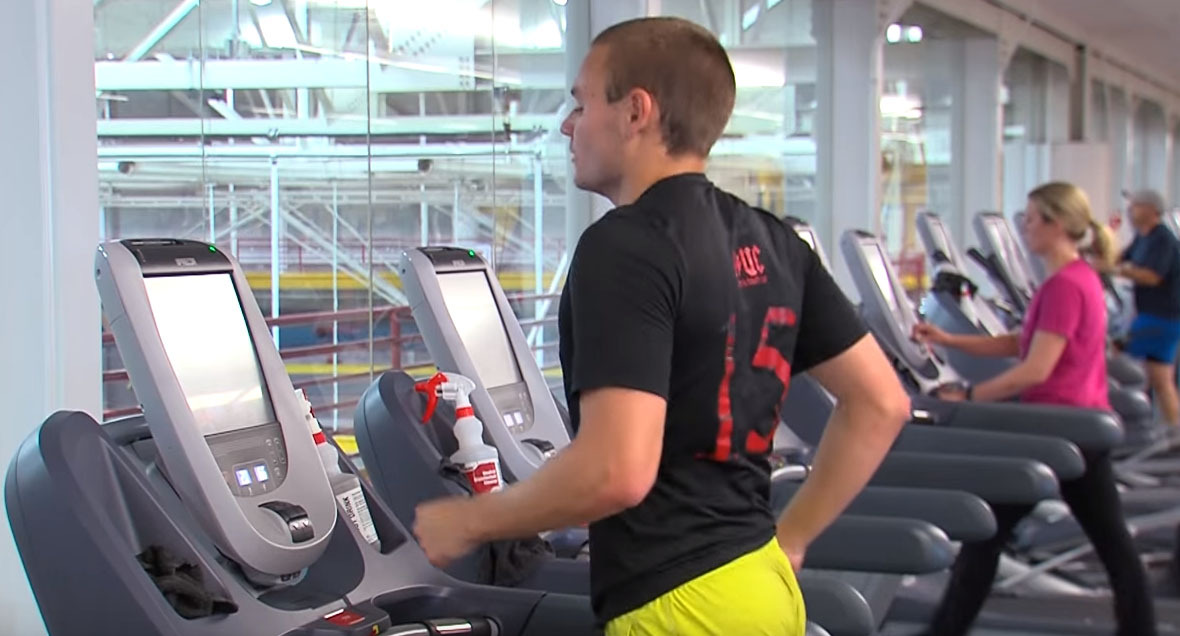
AMES, Iowa – Weight loss is often the goal for anyone starting a new exercise routine. It’s a good motivator, but Iowa State University health experts say weight is not the only factor to consider if you want to stick with it and see results.
DC (Duck-chul) Lee, an assistant professor of kinesiology, says obsessing over the number on the scale can quickly lead to frustration, especially if the pounds are slow to come off. To avoid giving up on a new exercise routine, focus instead on changes in muscle strength, energy levels, clothing fit, improved heart rate and other factors of overall health.

“Several studies have shown that even if people don’t lose weight, they still improve their health. It’s important to change our focus. It’s not only about how we look, but health is an important outcome,” Lee said. “Even if you don’t lose weight in January, but you feel strong and healthy, that is a good thing.”
Lee has strong evidence as to why it’s a good thing. His 2011 study, published in the journal Circulation, found maintaining and improving fitness lowered the risk of death from cardiovascular disease and all other causes for men, regardless of body mass index. Lee says BMI does not always accurately reflect overall health, because it ignores body composition. For example, football players, who are physically fit, may be considered obese because BMI is calculated using height and weight.
Making exercise a lifestyle
Most resolutions fizzle out after a few weeks or months. Making exercise a habit requires a deliberate effort to go to the gym or for a run or walk, said Alison Phillips, an assistant professor of psychology at Iowa State. Having an “instigation cue” that prompts you to exercise helps increase frequency, more so than the type of activity. Phillips’ research, published in the journal Health Psychology, shows that the cues that develop with exercise repetition come to make that exercise instigation automatic and more frequent.
The cue that works best may be different for everyone. Heading to the gym right after work or when the alarm clock goes off in the morning are examples of some popular cues. It gets easier to exercise the more your behavior becomes habitual, which requires repetition in the presence of that cue, Phillips said. Simply setting a cue will not make it a habit, she added. And the reasons for starting to exercise are not the same reasons people stick with the routine.

“If individuals only ever exercise in order to lose weight, they will not stick with it in the long-term,” Phillips said. “Those who maintain exercise over the long-term have internal goals, meaning they are exercising for exercising’s sake – they like it or it makes them feel better directly – rather than for external goals. People also maintain exercise because they are satisfied with continued outcomes of exercise, which could include weight maintenance.”
In addition to setting a regular time or other cue for instigating exercise, be sure to pick an activity that you like and that you can see yourself doing for the long haul. Phillip says if you’re exercising for long-term health benefits, exercise must be a life-long behavior – it’s not a temporary fix.
What type of exercise is best?
Federal guidelines for physical activity recommend 150 minutes (2 hours and 30 minutes) a week of moderate-intensity activity, such as brisk walking, or 75 minutes (1 hour and 15 minutes) a week of vigorous-intensity aerobic activity, such as running. The guidelines are helpful for maintaining or preventing weight gain. But if the goal is to lose weight, you need to do more and change your diet, Lee said. Just how much more, depends on the individual and his or her health.
Lee also recommends an exercise routine that combines cardiovascular and resistance training activities. Running or biking is a good way to burn calories, but weight lifting or pushups will build muscle. Lee says resistance training is especially important as we age to prevent muscle loss.
“In the short-term, aerobic exercise such as running might be more effective to lose weight. But in the long-term, you need to add muscle strengthening activities, because then you build muscle and increase your resting metabolic rate, which will burn more calories and fat even while you rest,” Lee said. “Resistance exercise is good for older adults, because if they add muscle strengthening, they can maintain or increase their quality of life.”
For anyone new to exercise or who feels uncomfortable going to the gym, developing and following a specific set of exercises can help build self-confidence. But for others, variety is important because the repetitiveness of sticking to a specific routine may be detrimental.
“You don’t have to be afraid of trying new things. You can have an instigation habit and try new types of exercise without worrying about losing the habit,” Phillips said. “It might be important for people just starting out to do the same thing until they realize they can do this, but in the long-term there does not seem to be a benefit of doing the same things over and over again.”
Both Phillips and Lee stress the importance of starting with a manageable workout plan. It’s not necessary to join a gym, if you prefer to exercise outside or use an exercise DVD at home. Incorporating exercise into daily activities is also a good way to move more. For example, you can take the stairs instead of the elevator, walk or bike rather than drive to work and stand part of the day at your desk.